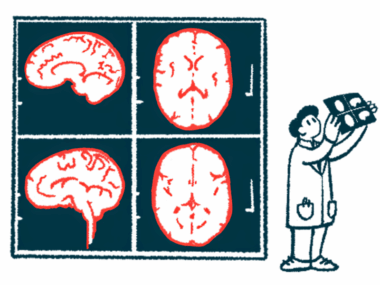MS TreatSim Program Allows Simulation of RRMS Clinical Trials
Computer program could improve study designs for disease-modifying therapies
Written by |

Researchers have created a computer program that can simulate clinical trial responses for relapsing-remitting multiple sclerosis (RRMS), which may improve clinical trial design for novel disease-modifying therapies.
The tool, called MS TreatSim, was described in the study, “In silico clinical trials for relapsing-remitting multiple sclerosis with MS TreatSim,” published in BMC Medical Informatics and Decision Making.
The landscape of RRMS treatment has changed dramatically in recent decades. There are now more than a dozen disease-modifying treatments widely approved to treat this most common type of MS.
These developments have generally meant more options and a better outlook for patients, but the change also has implications for how clinical trials to test new therapies are designed. With so many available treatments, new therapies are often tested against approved therapies rather than an inactive placebo.
Additionally, since diagnosis and care have improved in recent years, participants in clinical trials generally have less active disease (e.g., lower relapse rates) compared to patients in historical trials.
“A milder disease with fewer relapses results in the necessity for longer, larger, and thus more expensive clinical trials,” the researchers wrote.
Improving clinical testing efficiency
In an effort to improve the efficiency of clinical testing, researchers at InSilicoTrials and colleagues in Italy created a program called MS TreatSim, which aims to simulate the results from RRMS trials.
The program was created using a detailed model of the immune system and how it is known to be dysregulated in MS, as well as data from how several established MS therapies are known to modulate immune activity and impact disease outcomes.
In this study, the team showed that MS TreatSim could be used to establish different populations of RRMS patients — as an example, they created two populations, one including older patients with more lesions, and the other including younger patients with less lesion load.
In the simulations, the two populations showed clear differences in relapse rates and other outcomes, with results “mirroring two distinct subpopulations of RRMS patients with differences in (mean) disease activity,” the researchers said.
The team also noted the population of digital patients included in the simulation showed patient-to-patient variability similar to what’s seen among patients in real life.
Researchers recreated a previous trial on Tysabri
In a separate analysis, the researchers used MS TreatSim to recreate the AFFIRM Phase 3 clinical trial (NCT00027300), a placebo-controlled study that supported the approval of Tysabri (natalizumab).
In the original study, 67% of patients on Tysabri were relapse-free after two years, as compared to 41% of those on placebo. In the simulated trial done using MS TreatSim, 90% of patients on Tysabri were relapse-free, as compared to 40% of those on placebo.
“In the control group, the percentage of relapse free subjects in the [simulated] trial reproduced the percentage of relapse-free subjects in the AFFIRM trial well,” the researchers wrote. “In the simulated treatment group, the treatment effect was clearly visible, although the percentage of relapse free subjects was higher in the simulation than in the trial.”
The team added that, while this test case is not a comprehensive evaluation of the simulation program, it “clearly demonstrates the potential utility of MS TreatSim at the clinical trial level.”
In addition to helping with clinical trial design, the scientists said the simulation program might be helpful for neurologists deciding the best treatment option for patients. Further work to improve and refine the program is ongoing.






